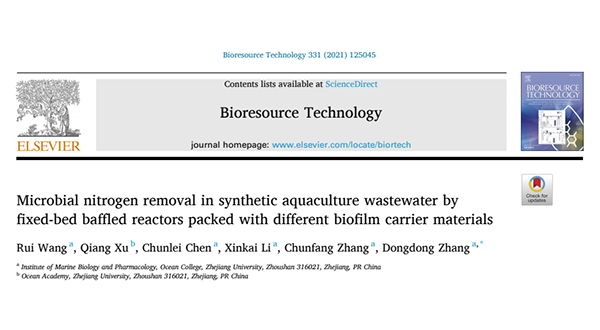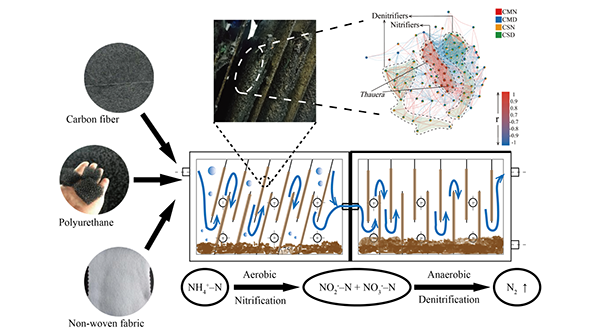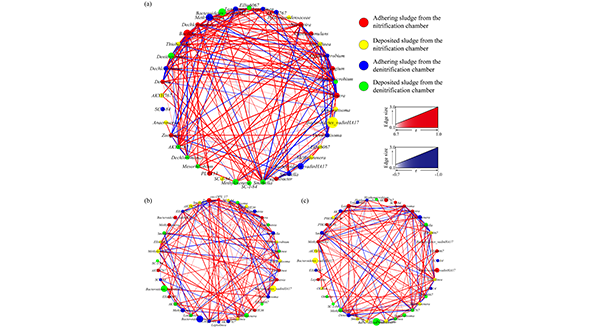NEWS
Academic Achievement of The Master in Ocean College Was Published on Bioresource Technology
The research team of Associate Professor Dongdong Zhang from the Marine Biology and Medicine Institute of Ocean College has made important progress in the research on nitrogen removal treatment of aquaculture wastewater. The academic paper entitled Microbial Nitrogen Removal in Synthetic Aquaculture Wastewater by Fixed-bed Baffled Reactors Packed with Different Biofilm Carrier Materials was recently published in Bioresource Technology (BT, IF=7.539).

Aquaculture wastewater often contains excessive nitrogen pollutants. If they are discharged without effective purification treatment, it will have adverse effects on the ecological environment and human health. The use of biological technology to achieve nitrogen removal of aquaculture wastewater has the advantages of low cost, no pollution and thorough nitrogen removal. However, the content of organic matter in aquaculture wastewater is usually low, which limits the enrichment of functional microorganisms and decreases the biological nitrogen removal efficiency. In view of this, this study constructed fixed-bed baffled biofilm reactors, packed with three kinds of different biofilm carrier materials (carbon fiber, polyurethane and non-woven fabric) to enrich a large number of functional microorganisms, and finally achieved high aquaculture wastewater treatment efficiency.

Fig.1 Graphical abstract
The reactors in this study effectively removed nitrogen pollutants such as ammonia, nitrate and nitrite in aquaculture wastewater through the nitrification-denitrification. Among them, the reactor that packed with carbon fiber material as the biofilm carrier had the highest nitrogen removal efficiency, which can remove more than 90% ammonia and nitrate in aquaculture wastewater, and the highest ammonia and nitrate removal rates can reach 96.28 and 64.09 mg/(L·d), respectively. The nitrogen pollutants in the wastewater were basically completely removed. This study also revealed the mechanism of reactors and clarified the functional microorganisms in different biofilm materials and compartments in reactors through the microbial community composition analysis, the interaction relationship analysis and the quantitative analysis of the functional bacteria. It proved that carbon fiber materials can efficiently enrich nitrifying and denitrifying bacteria. Simultaneously, the interaction relationship network analysis showed that the main bacteria in the carbon fiber fixed-bed baffled reactor had a more complex interaction relationship, which was conductive to form a stable microbial community structure and achieve a high-efficiency nitrogen removal.

Fig.2 Network diagram of microbial interaction relationship in reactors
This study proved that the fixed-bed baffled reactor packed with carbon fiber biofilm carrier can achieve efficient biological nitrogen removal in aquaculture wastewater. It has application potential for aquaculture wastewater treatment. The results can provide some theoretical references for the sustainable development of the aquaculture industry.
Rui Wang, the master student of the Marine Biology and Medicine Institute of Ocean College, is the first author of this paper. Associate Professor Dongdong Zhang is the corresponding author. This work was supported by the Zhejiang Key Research and Development Program and the Scientific and Technological Project of Zhoushan.

